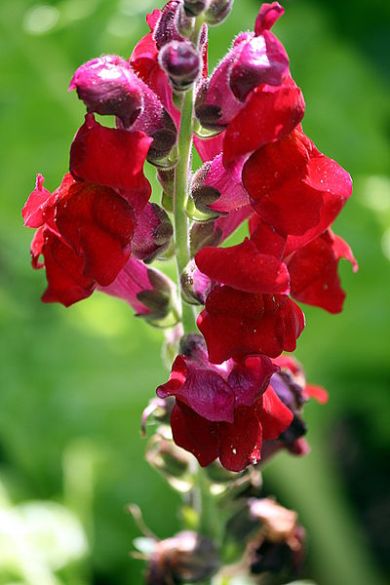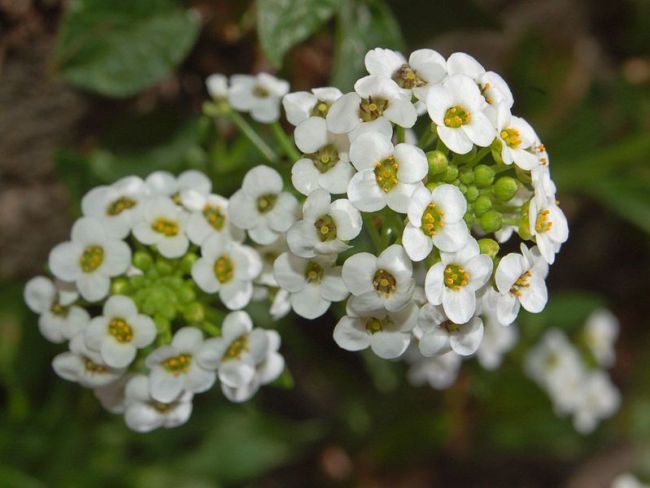
Antirrhinum majus. Hedwig Storch. Wikimedia Commons.
Summer is the for the Northern Hemisphere, as there as so many different climate zones to have a wave of blooms, its easy to get lost. However, not all of the Northern Hemisphere is ‘hot’ during the summer. This leads to wonderful cool summer weather climates- particularly in maritime regions of the Pacific Northwest and Northern Europe. In these regions, summer days are between the 60-80 degree range, and nights in the upper 40’s to lower 60’s. Basically, its the kind of weather we crave if we live in hot places come July. In these climates, warmer weather plants tend to not bloom well or even grow at all, but certain plants we consider as cool-season annuals will bloom all summer long with no difficulty. These cool-season annuals will bloom in warmer regions either early or late in the growing season but tend to bake and even die out during the summer heat.
One of the most beloved cool-season annuals of the world are snapdragons. While the family is native to a large part of the Northern hemisphere, the main cultivated variety (Antirrhinum majus) is a European introduction. These unimpressive plants by themselves look weedy (and are weedy in many areas) until they put up two foot long spikes of multicolored interesting blooms during the mid-to-late summer. The individual flowers look like dragon mouths that move when squeezed by fingers. The shape is due to their pollinators being bees, providing the insects a platform to land on while collecting the nectar.
The plants grow fast in most garden environments and will re-seed themselves in a proper environment. The flowers are often used as fillers in bouquets, but are terrible to ship in most cases, lending to their usage locally. The scent of the flowers does not carry, but it is candy sweet, perfect for little fingers and noses to come and sample. I remember one particular plant always being present in the garden of my youth, and my nose being constantly peppered with snapdragon pollen. The flowers do contain poisonous compounds, however, so some caution is necessary.

Lobularia maritima. Hectonichus. Wikimedia Commons.
From the same stretch of Mediterranean European coastline comes Sweet Alyssum, one of the first spring annuals to bloom, and one of the most reliable. Its a small flowering plant, used as a ground cover as much as an annual, and is fairly hardy as well, reseeding commonly and naturalizing in temperate regions. They grow almost too well- taking up any conceivable area in the garden and cascading over rock walls in the rock gardens, filling every crack in between rocks and sidewalks! The leaves are mostly inconspicuous, as they are hid behind a spike of flowers almost constantly. The individual blooms are quite tiny, but the spike is fairly impressive in its numbers. They come in white to pink and lavender colors.
The scent is also very nice when sampled *lightly*. I say lightly, because enough time with them will leave you convinced they are rank as can be! From a first whiff on the breeze, they can come across as like hay with a sweet almond touch. In a hot garden bench, the indoles present in these mustard relatives become all too aware of themselves.
Lastly, certain annual lupines also make good garden candidates, particularly for the Pacific Northwest. The majority of species of Lupines cultivated are perennials, like L. polyphyllus, which can certainly be grown as a cool-season annual on the east coast; but one fragrant one, L. nanus is good for Californian gardens and drier annual gardens. It is better known as a wildflower for the chaparral communities of coastal California. Lupines have a honey-like scent with an undercurrent of pepper in their throats.

Lupinus nanus. Tom Baird. 14 March 2005. Wikimedia Commons.
Tomorrow I’ll continue the cool season annuals with Sweet peas, poppies, and the French darling, Mignonette, before moving on to warm-season annuals. The seasonal march continues!
